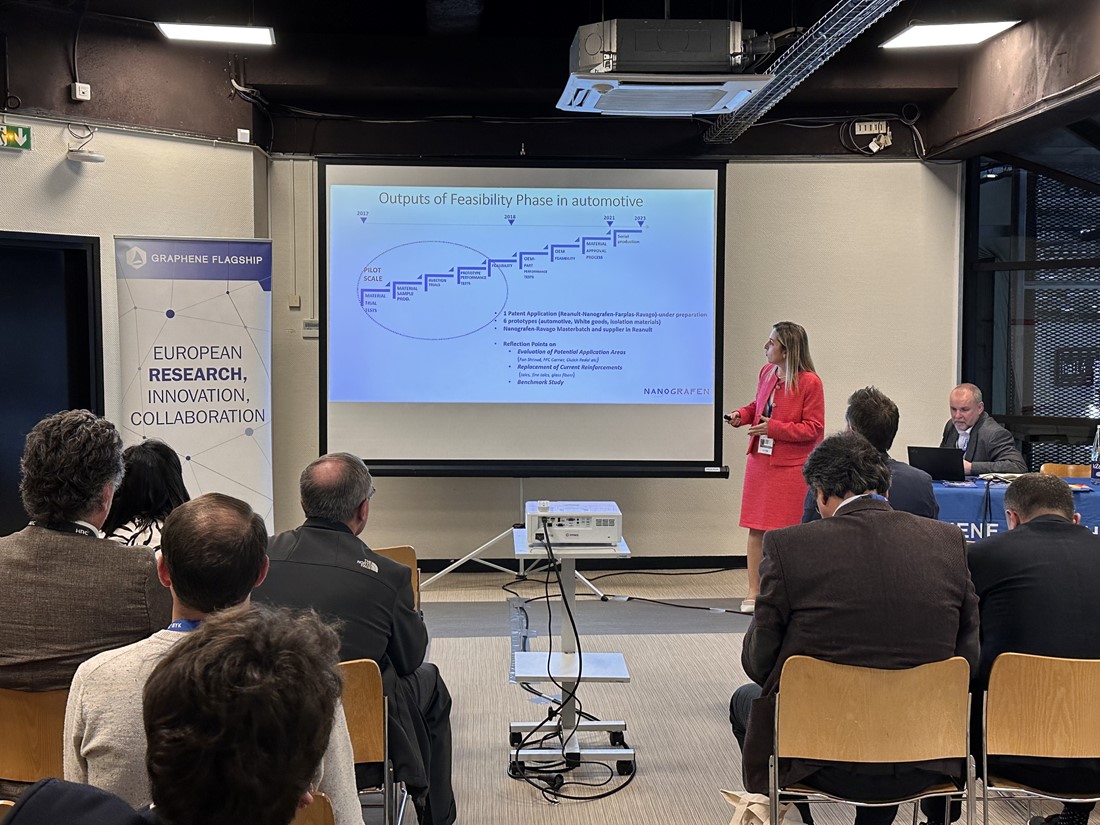Nanografen is making automotive vehicles more eco-friendly – here’s how
Nanografen, a nanotechnology R&D company and Graphene Flagship partner founded in Turkey in 2013, is finding clever ways to recycle old tyres into graphene applications. Representatives of Nanografen recently shared their work with a wide range of stakeholders at JEC World 2023, where the company was also a finalist for an award.
Nanografen, a Graphene Flagship partner based in Turkey, is producing graphene from waste tyres with the goal of improving recycling systems and making automotive vehicles more eco-friendly.
By producing graphene in this way, Nanografen lowers the cost of graphene. Using waste tyres as a starting material – and applying recycling and upcycling technology for mass production in the plastic industry – is cheaper than many other forms of graphene production.
For these reasons among others, Nanografen’s innovative work shows both high market and environmental potential.
There currently exist significant problems in recycling waste tyres or ‘end-of-life’ tyres – meaning tyres from cars and other vehicles and devices that can no longer be used.
Indeed, waste tyres are one of the world’s most problematic sources of waste due to their large volume and the fact that they also contain a range of ecologically hazardous components. Burning waste tyres as a means of disposal generates a lot of smoke that caries toxic chemicals, like carbon monoxide and sulphur oxides.
Tyre graveyards also take up an increasing amount of space worldwide, and mechanical recycling of tyres does not occur on a large enough scale to tackle the problem sufficiently. Meanwhile, thermal recycling techniques are not efficient.
This means that Nanografen’s repurposing of waste tyres in fact creates a market opportunity. Conversion of waste tyre to recycled carbon black, to graphene, leads to possibilities for graphene to become an impactful part of the thermoplastic composites market. Thermoplastic composites are used across all sorts of industries, including aerospace, textiles, automotive, construction, energy storage, renewable energy, and flame retardants.

Nanografen co-founder Burcu Saner Okan presenting Nanografen's work at JEC World 2023.
Nanografen has already begun developing prototypes for graphene-reinforced lightweight automotive parts, for use in modern electric vehicles. For example, Nanografen – in partnership with compounder Ravago – is now an official supplier of Renault: their graphene-reinforced front end carrier part has been validated by Renault for use in some of their vehicles.
Graphene-reinforced lightweight automotive parts mark an exciting development for the automotive industry. These parts are cost-effective and also lightweight enough that they help reduce vehicular weight overall, thereby reducing the amount of energy or oil needed to power the vehicle. In this sense, their use in vehicles makes these vehicles more eco-friendly.
Nanografen is already being recognised for its innovative work. At JEC World 2023 last month, Nanografen was among the finalists for the event’s prestigious Innovation Awards.
Other Nanografen-based products under commercialisation include a graphene-reinforced recycled washing machine pulley, and graphene-reinforced flexible polyurethane foams for sound insulation.
To learn more about the exciting work of Graphene Flagship partner Nanografen, be sure to visit their website here: https://www.nanografen.com.tr/index.html.




